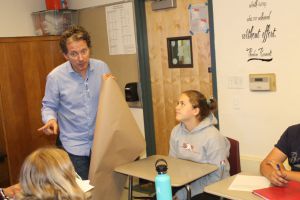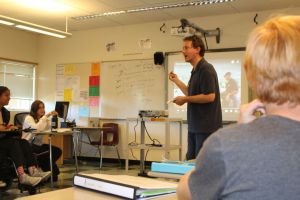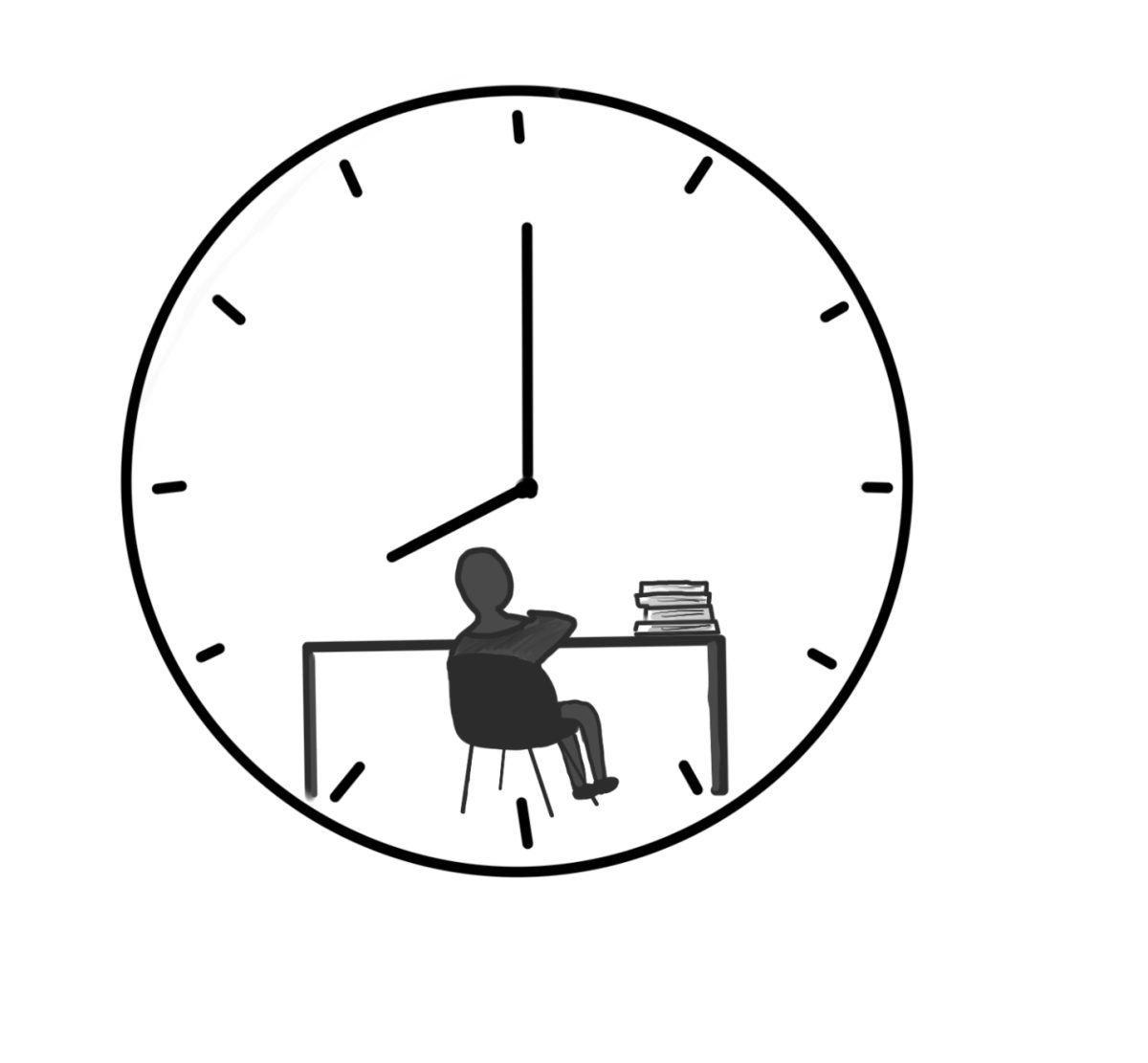While walking into Alberto Aparicio’s room, the peculiar organization of the desks, all facing towards the center of the room, grab your attention. This is Aparicio’s stage—where students can develop a deeper understanding of Spanish in a collaborative classroom atmosphere. Worksheets and textbooks are pushed aside in Aparicio’s class, and his storytelling and acting methods are put forward.
Aparicio, a new Spanish teacher at Redwood this year, uses a strategy to engage his students called Teaching Proficiency through Reading and Storytelling (TPRS), a new and innovative way of teaching foreign languages. Instead of doing worksheets in order to expand Spanish knowledge, the TPRS method uses more group work activities and acting out scenes in order to better comprehend what they are learning. The TPRS method is based on reading and telling stories in a natural approach. Unlike subjects such as math, where it is imperative to master each level in order to progress to more rigorous content, the TPRS method starts with reading and then dives into the complex concepts and vocabulary at the higher stages.
Although many Spanish teachers at Redwood use TPRS as an education tool, most utilize traditional teaching methods as their principle form of instruction. The freedom to use the TPRS method at Redwood was one of the factors Aparicio took into account when he was searching for a teaching job.
Before coming to America, Aparicio got his degree in Communication and ran professional seminars for adults, as well as specialized in International standards. Four years ago he came to the United

States, and became a Spanish Teacher at Lowell High School last year. There he finished his student-teacher year, but rarely used the TPRS method.
“I implemented TPRS from time to time, not every day, with other different techniques like instructional conversations, group work, reading techniques and traditional grammar,” Aparicio said.
Aparicio began using the TPRS method full-time at Redwood because his degree in communications educated him on the method. Aparicio loves the method because every student can learn through TPRS and it offers a natural approach to learning a new language.
“It is to learn a language through repetition reading, and asking questions. When a baby learns a language, how do they learn? Through repetition, their parents tell them a lot of words, a lot of information, a lot of language input and they begin to process that in a natural way beginning with comprehension,” Aparicio said.
In order to keep his class engaged, Aparicio uses his students as actors and has them use rejoiners to keep them engaged during the stories, such as saying, “Don’t tell me” or “It’s wonderful.”
“[Students] volunteer because they love [acting], and we perform in the middle of the class about the story… and I’m the director of the play, and if they are struggling a little bit about a sentence or a word, I am just giving them a hint,” Aparicio said.
Another aspect of TPRS is reading and translating. The students translate the books they read from Spanish to English and vice versa to solidify comprehension. Through this repetition, Aparicio’s students are playing with the different rules of grammar while gaining confidence in their Spanish speaking abilities.
“[Students] are asking a lot of questions about grammar, and that is a positive attitude because they are noticing how the words match in Spanish just by reading and hearing me and hearing themselves tell the stories,” Aparicio said.
Although TPRS is a fairly new method, Aparicio says he has observed a substantial increase in the use of TPRS in schools.
“There are a lot of schools that still teach traditional grammar, but more and more schools are adopting the TPRS method and variations of the method in a natural approach because it is the way [students] learn it,” Aparicio said.
Freshman Kate McHugh is enrolled in Aparicio’s Spanish 3-4 class and has little experience with TPRS. However, McHugh noted that she has seen a dramatic improvement in her Spanish due to Aparicio’s new method.

“It helps me a lot because I can understand the dialogue that Spanish speakers would use in real life, versus just understanding what the words mean,” McHugh said.
McHugh has started to experiment with her Spanish knowledge outside of the classroom by speaking Spanish with her parents. Although her parents only have a minimal understanding of the language, McHugh still enjoys showing off her new skills.
“I always like having short conversations with my parents, and they will try to figure out what I am trying to say. I think [TPRS] makes me feel more comfortable coming up with sentences and stringing words together,” McHugh said.
Freshman Sanah Keswani-Santiago is also in Aparicio’s 3-4 class and has had relatively little experience with TPRS in her past Spanish classes, but has already noticed the benefits of this teaching style as well.
“It is more about learning a subject through experiences like storytelling, songs and novels. That has been more effective than the traditional methods,” Keswani-Santiago said.
The TPRS method has helped Keswani-Santiago become more comfortable outside of school when conversing in Spanish. Since she is constantly speaking on the spot in the classroom, it has made it easier for her to speak the language in other environments, too.
“If you are in a situation where you have to speak Spanish on the spot, and if you have the comprehension skills and talk regularly in your class in Spanish, it is more effective than the traditional way,” Keswani-Santiago said.
Aparicio has found TPRS to be a beneficial teaching method and believes the method will increase in popularity in the future.


















